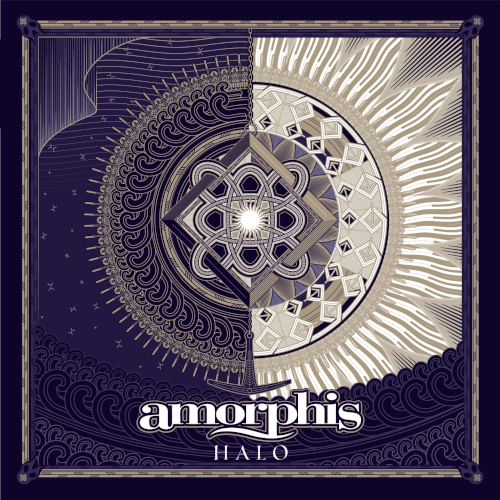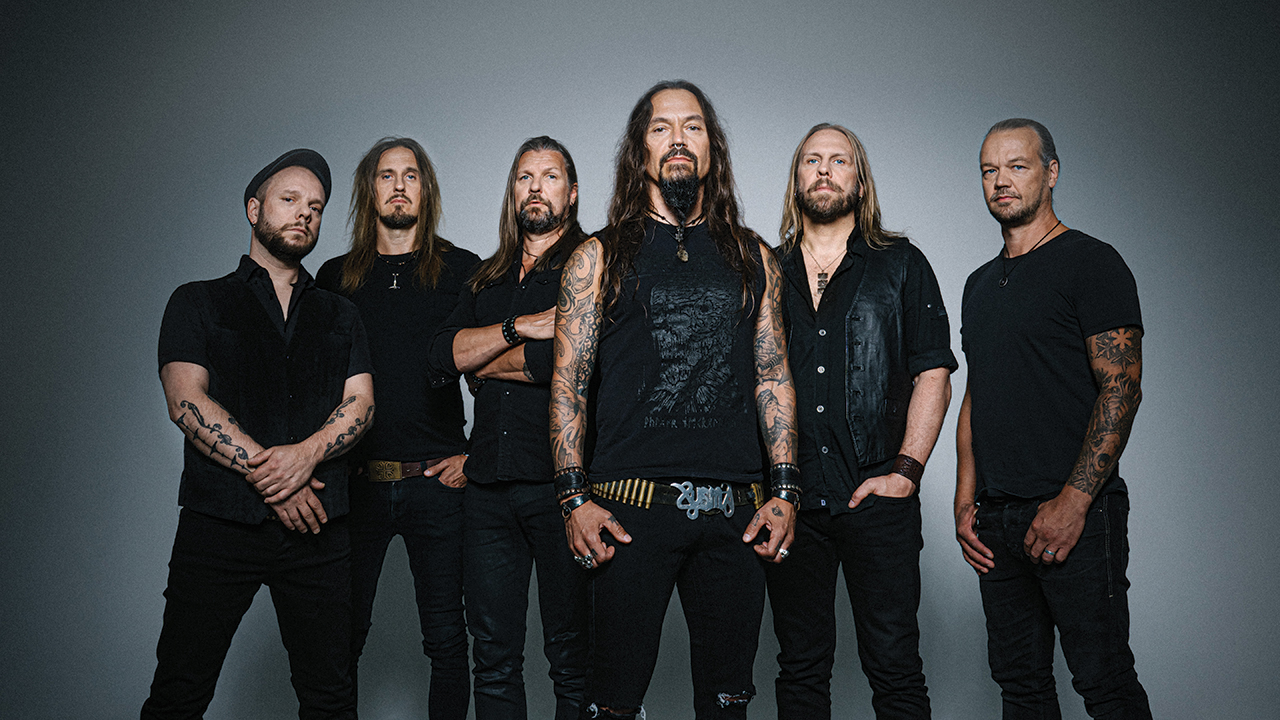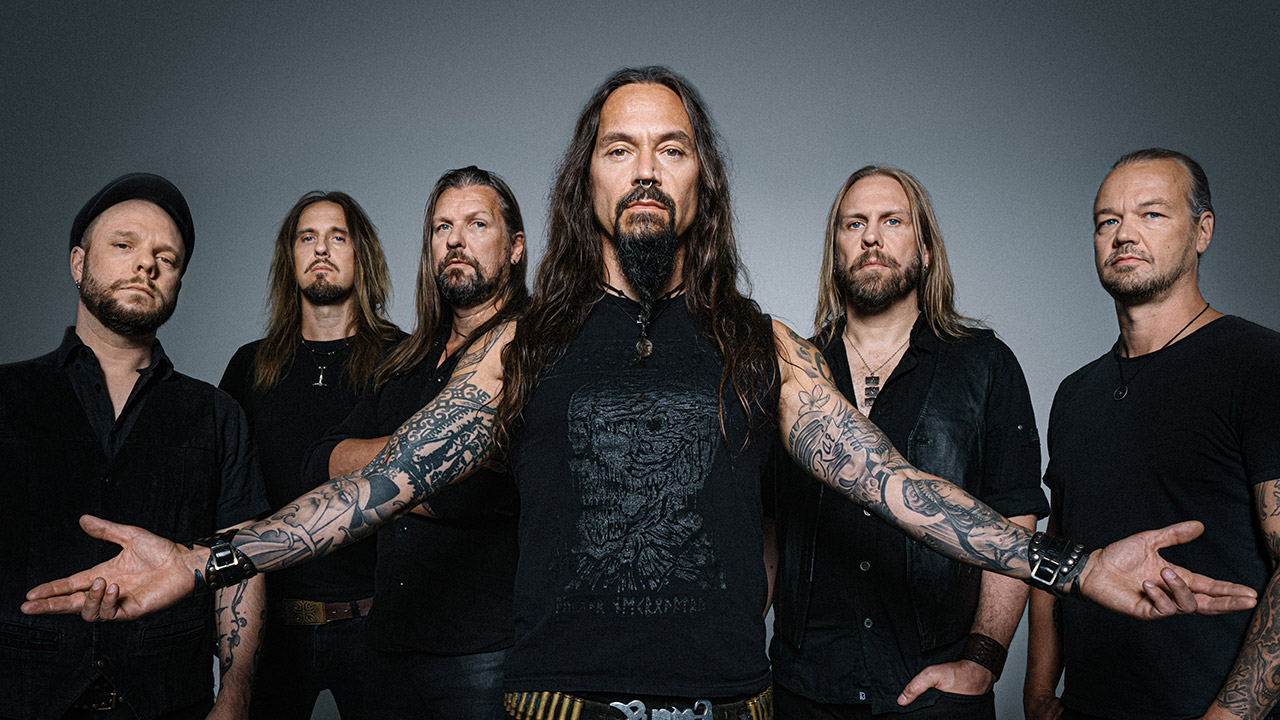Many great bands have a magnum opus: that album that catapulted them to superstardom and, years later, remains a creative apex. Metallica have Master Of Puppets. Nirvana have Nevermind. Rush have 2112.
Amorphis are undoubtedly another great band. They’ve experimented with almost every heavy subgenre under the sun and reaped acclaim time and time again for 30 years. That said, what’s their magnum opus? Is it 1994’s Tales From The Thousand Lakes, which revolutionised extreme metal by integrating Middle Eastern guitar harmonies? How about Skyforger from 2009: a collection of wonky power/prog metal tracks driven by majestic melodies? Or maybe it’s their last album, 2018’s Queen Of Time, which danced between death metal, hard rock and synth-prog so fluidly that it lifted their popularity to new levels?
It’s an inconclusive debate thus far, but any arguments scribbled together will be fed through a paper shredder once readers have heard listened to Halo. Amorphis’ 14th long-player is just as eclectic as its predecessor, but has been streamlined into 11 direct, episodic anthems. Every song is a short, heavy, catchy thrill, de-emphasising the electronic and symphonic flair from before without compromising the band’s long-running prog inclinations.

“On Queen Of Time, there were a lot more orchestral elements,” concurs Amorphis’ rhythm guitarist, Tomi Koivusaari, over the phone from Finland, his homeland. “We were a little bit afraid of heading further into that orchestral direction, so this sounds more like a band [and not] too many things. There’s a lot going on, but it’s more hidden.”
Lead single The Moon is a prime example of Halo’s sly complexity. On first listen, it’s an instant death metal/power pop hit. Frontman Tomi Joutsen, arguably the best vocalist in all of heavy music, wows as he rockets from Earth-shaking growls to an inescapable earworm of a chorus. ‘You’re the moon, my guiding light!’ he cries during the track’s triumphant crescendo, building a call-and-answer conclusion with his own animalistic roars. Hummable keyboards similarly hook, luring you into repeat listens where you’re eventually struck by the complex drum patterns and exotic guitar melodies.
The formula repeats on A New Land, which darts from death metal tremolo picking to clean-sung hard rock in the same verse. Then, a huge refrain caves into twanging Scandinavian folk music. Flutes quietly whistle underneath Windmane, while The Wolf’s guitars impressively run the complete metal gamut, with barrelling chords, squealing high notes and flamboyant Iron Maiden shreds. Epilogue My Name Is Night ends Halo with a multifaceted duet, featuring Swedish singer Petronella Nettermalm: a melancholic finale to what’s otherwise been a hugely accessible progressive metal jolt.
“We were talking in the band, [saying], ‘This album is heavier; maybe it’s too heavy, with too much growling,’” remembers Koivusaari. “Our producer, Jens Bogren, was the opposite. He was worried that it was too poppy. Of course, there are a lot of catchy melodies with the vocals, but I still think it has heavier riffs and is, overall, heavier.”

For the lyrics of the album, Amorphis once again turned to Finnish poet Pekka Kainulainen, who’s written every word in every song they’ve released since 2007. And, as the band have done since as far back as Tales From The Thousand Lakes, the foundation of Halo has been sourced from the Kalevala, the national epic myth of Finland. Specifically, it’s a concept album about explorers venturing northwards, paralleling moments from the tale. In the Kalevala, Tuonela, the Finnish realm of the dead, is at the northernmost point of the world. Plus, two of the main characters, Väinämöinen and Lemminkäinen, each brave journeys north in search of a woman to marry. “The way Pekka works, he takes some things from the Kalevala, but he does it in a personal way,” explains Koivusaari.
“When we were kids, you had to learn about [the Kalevala] in school,” he continues, before drily quipping that, “Everybody hated it. I don’t know how many people read it, but everybody knows the characters.”
According to the guitarist, the only reason the band began making use of the Kalevala in their music was because “none of us were interested in, or capable of, making lyrics”. So, they stuck with already established stories. “We felt that we didn’t want to ruin the music, which has always been the main thing to us. We always compose new songs as instrumentals first.”
He adds: “Somebody’s probably reading the Kalevala right now because of our music.” Prog asks if he’s ever autographed a book copy of the myth for a fan. “Hundreds,” he laughs.
Reminiscing further, Koivusaari paints the picture of a childhood self that, probably, would have keenly avoided the Amorphis we hear in 2022. At the same time that he was being bored to death by the Kalevala at school, he was obsessed with the unadulterated death metal fury of aggressors such as Carcass: bands that don’t share any of the melodic beauty that Koivusaari and his bandmates’ music shimmers with today. As he got older, though, he discovered 70s psych and prog rock, citing the Doors and Pink Floyd as initial favourites.
“When we were 15, it was only Morbid Angel, Carcass and Napalm Death,” he explains. “By the time we did our debut album, The Karelian Isthmus [in 1992], we were past this ‘only death metal’ phase. The Karelian Isthmus was us thinking, ‘We are a death metal band and we have to do death metal’, but we’d started having different tastes as well.”
The Karelian Isthmus built Amorphis a bulletproof metal foundation, but its hulking chords, marching drums and exclusively grunted vocals showed little in the way of transcendence. The same can’t be said of the subsequent Tales From The Thousand Lakes. Not only did it establish the band’s long-running fascination with the Kalevala, but its Middle Eastern-sounding guitar melodies were inspired by obscure, psychedelic and progressive Finns Kingston Wall.
“They only did three albums but they had a huge influence on us,” says Koivusaari. “It was progressive rock with Middle Eastern melodies and a couple of songs had Sakari Kukko playing saxophone. At the time, we started to listen to a lot of different types of folk music as well, lots of different music from different countries. That really helped.”
The band grew closer and closer to prog rock as the 90s continued, eventually ditching metal altogether during the trilogy of Tuonela, Am Universum and Far From The Sun. “We didn’t know what kind of music we were doing anymore,” Koivusaari admits. “We were a bit confused; we got rid of the death growls and stuff like that.”
Their saving grace was Tomi Joutsen joining the band as their new vocalist, replacing Pasi Koskinen, in 2005. “When Tomi joined the band, he said he could do the growls again and wanted to play all the old songs. We tried that and everybody went, ‘Yeah, this feels great!’ So, [the metal] came back because of that.”
Since partially returning to their roots with growls and extreme music’s muscularity, Amorphis have cemented themselves as one of the most dynamic and peerless forces in progressive metal. Queen Of Time finally pushed the sextet to academy-level shows, supporting Dimmu Borgir across Europe. A 2021 run under Nightwish added a booster to their rocketing success, despite the cancellation of the tour’s UK date. As rock’n’roll as it would be for Amorphis to say they want to conquer the world with their forward-thinking eclecticism, Koivusaari concludes that his band are elated just the way they are.
“Honestly, we don’t have any dreams of being a stadium band,” he states. “We’re very happy where we are and we’ve been doing this for so long now that we just want to continue for as long as we can.”
Considering Amorphis are now responsible for a string of prog metal masterpieces, them wanting to remain on their current course is welcome news to us.
This article originally appeared in issue 127 of Prog Magazine.

